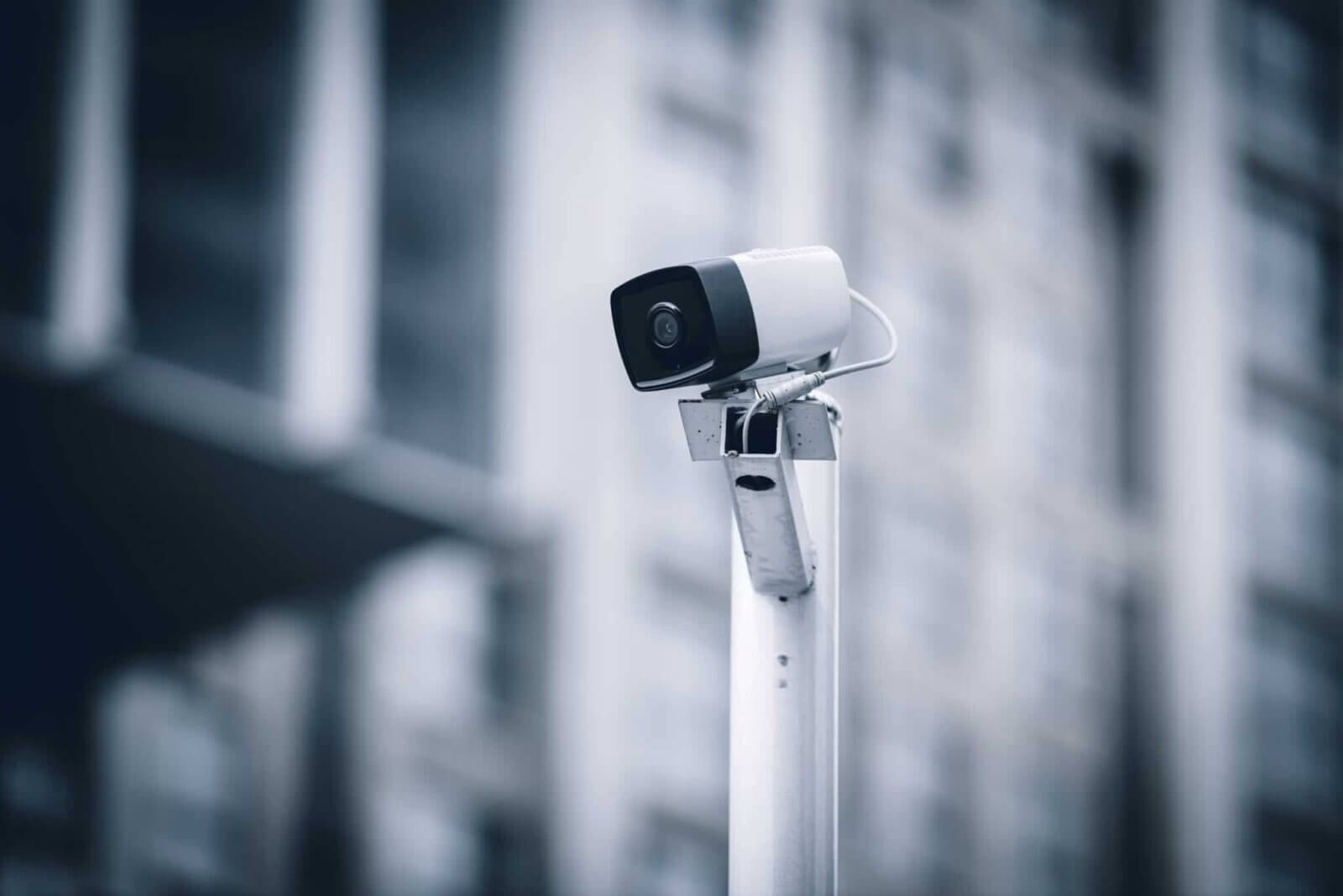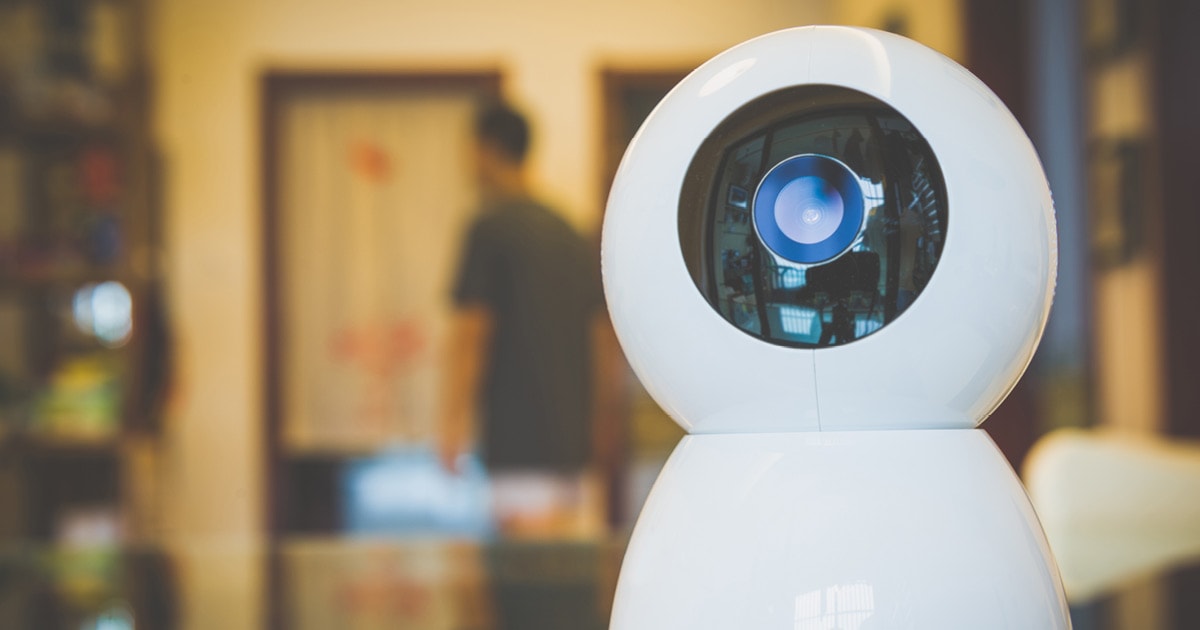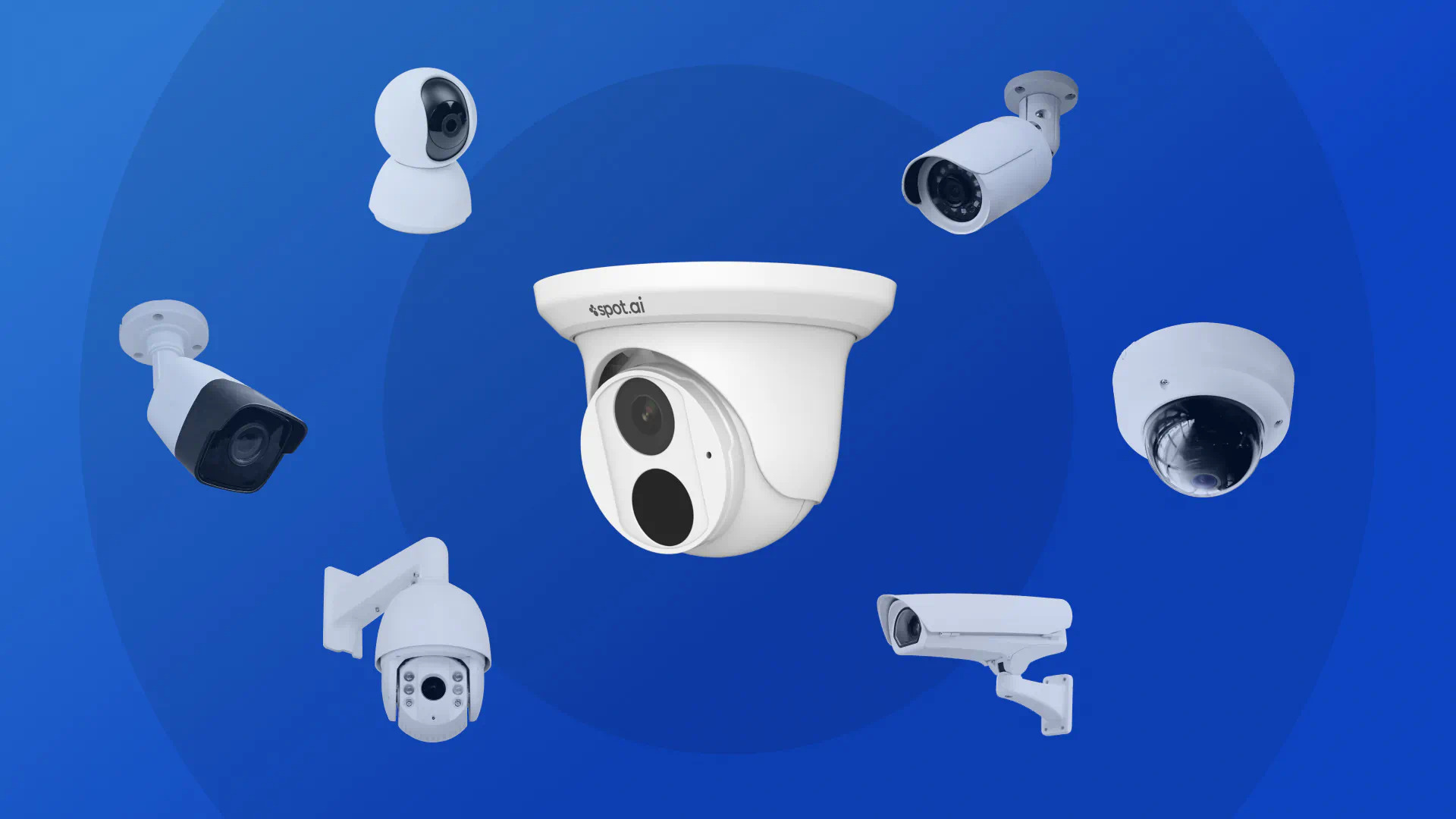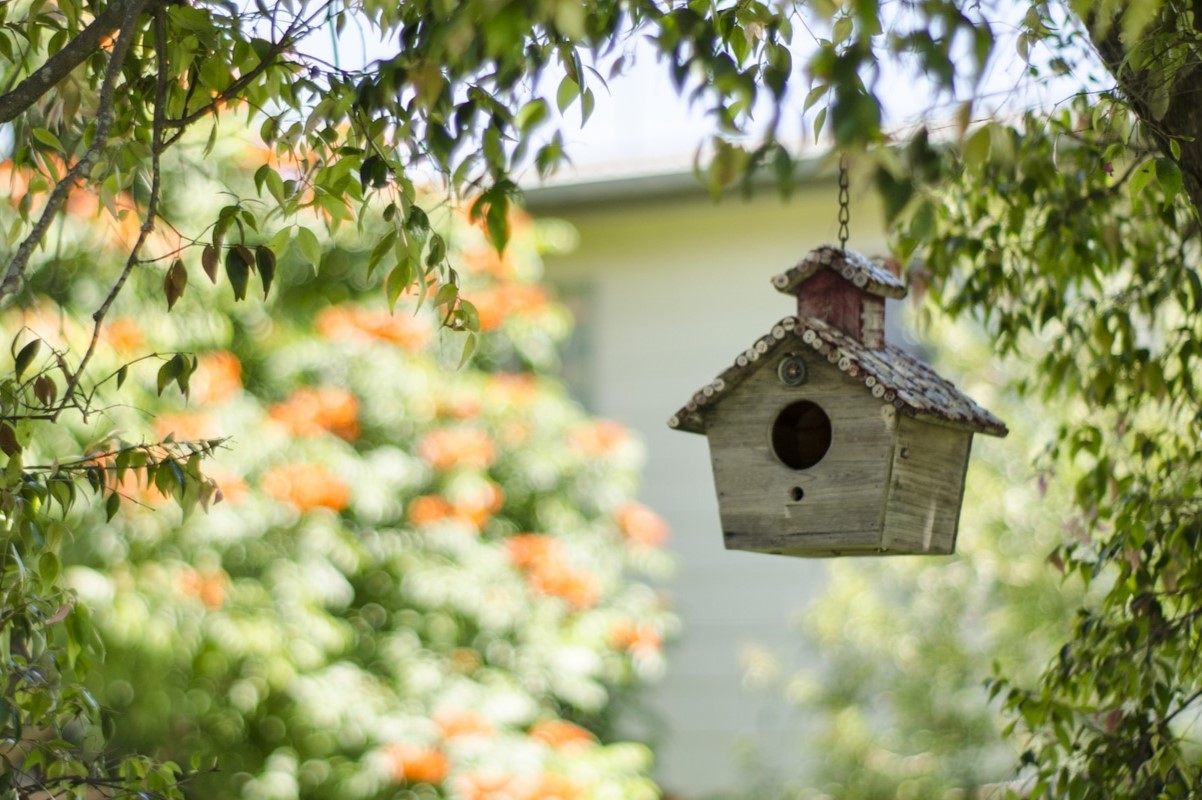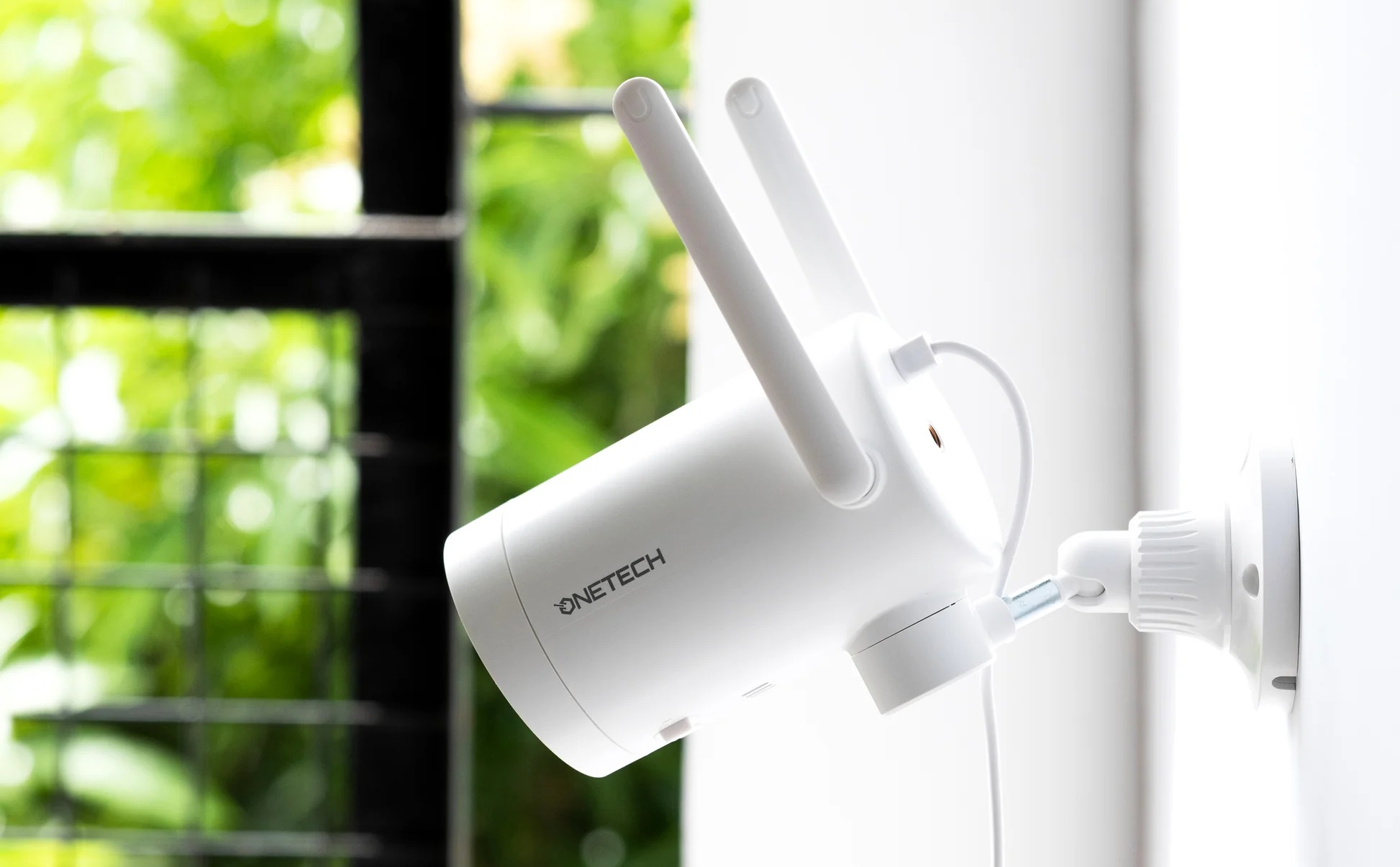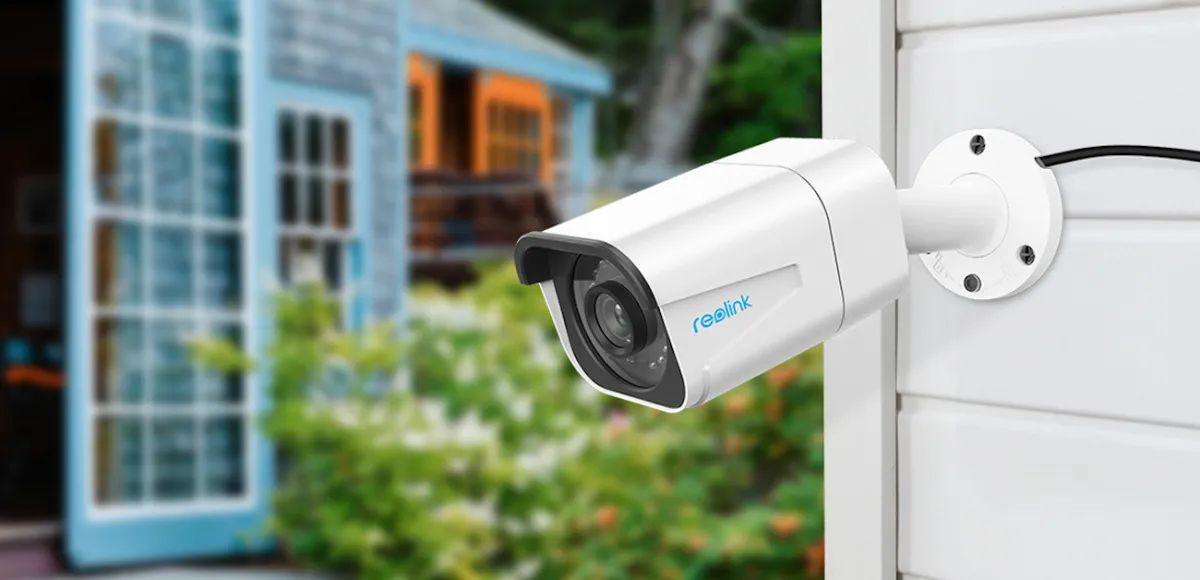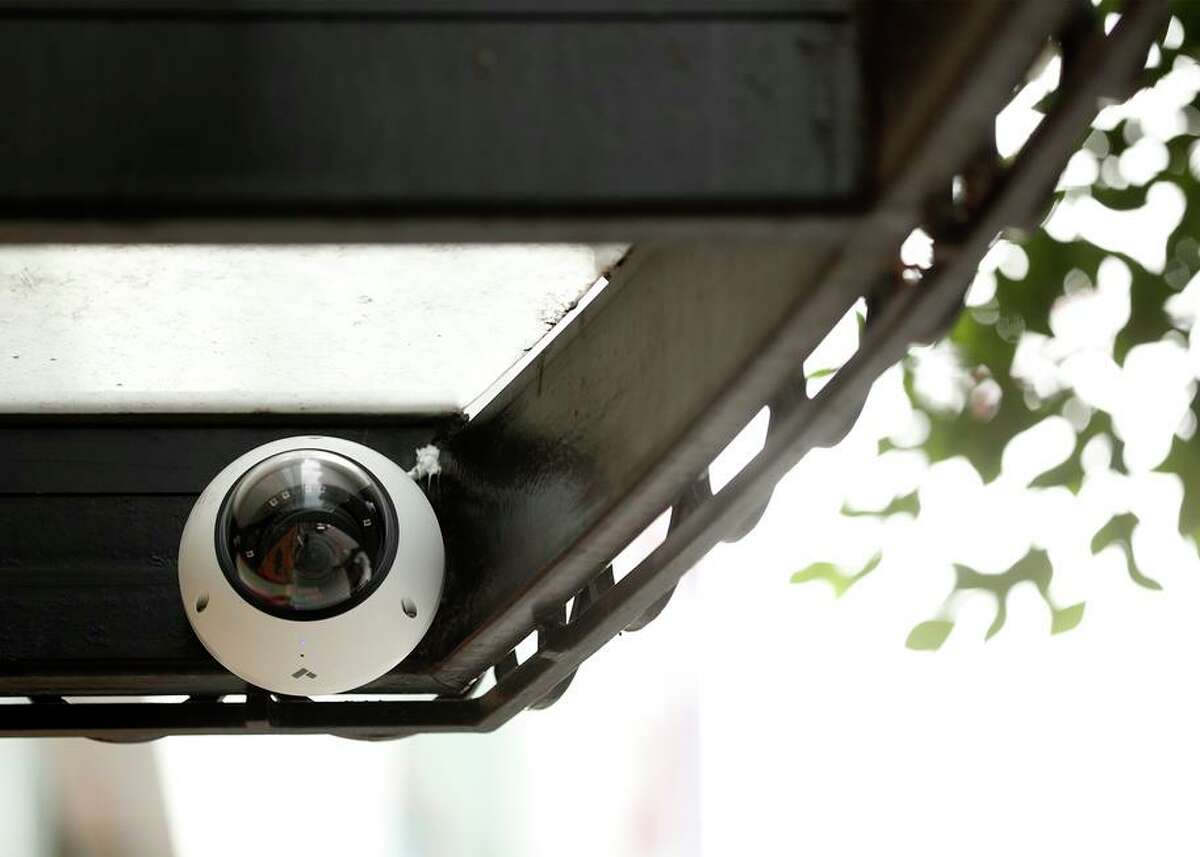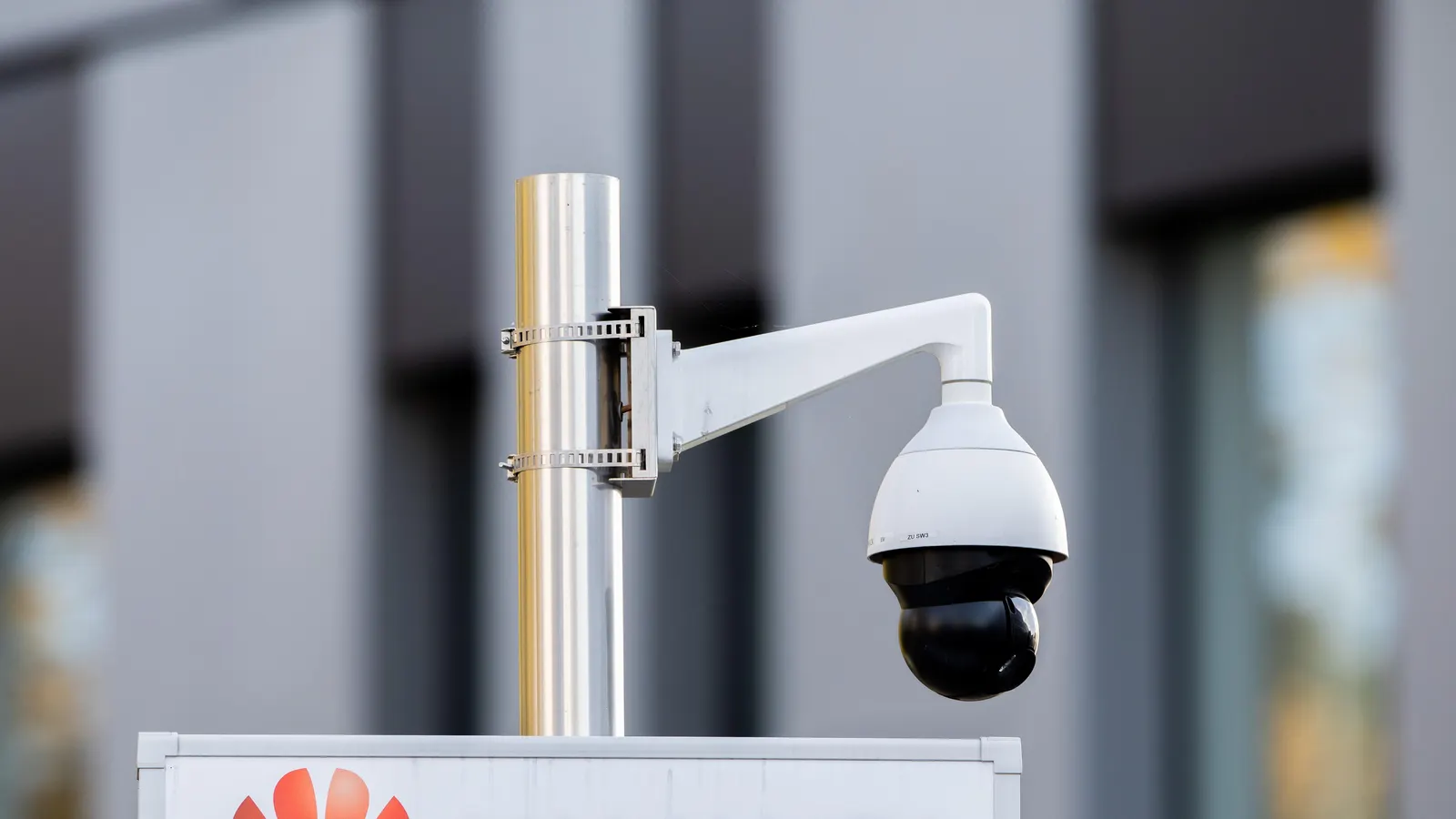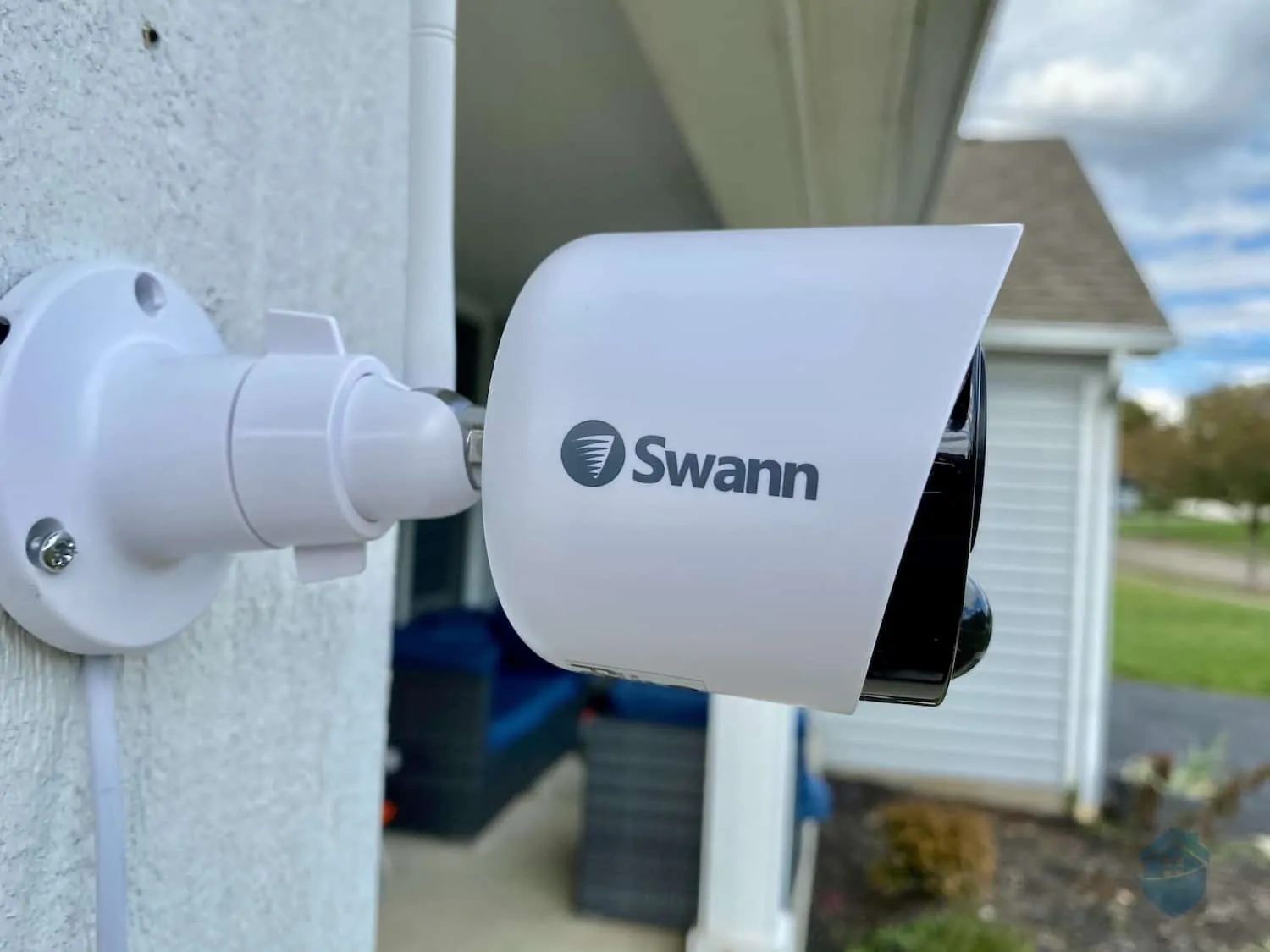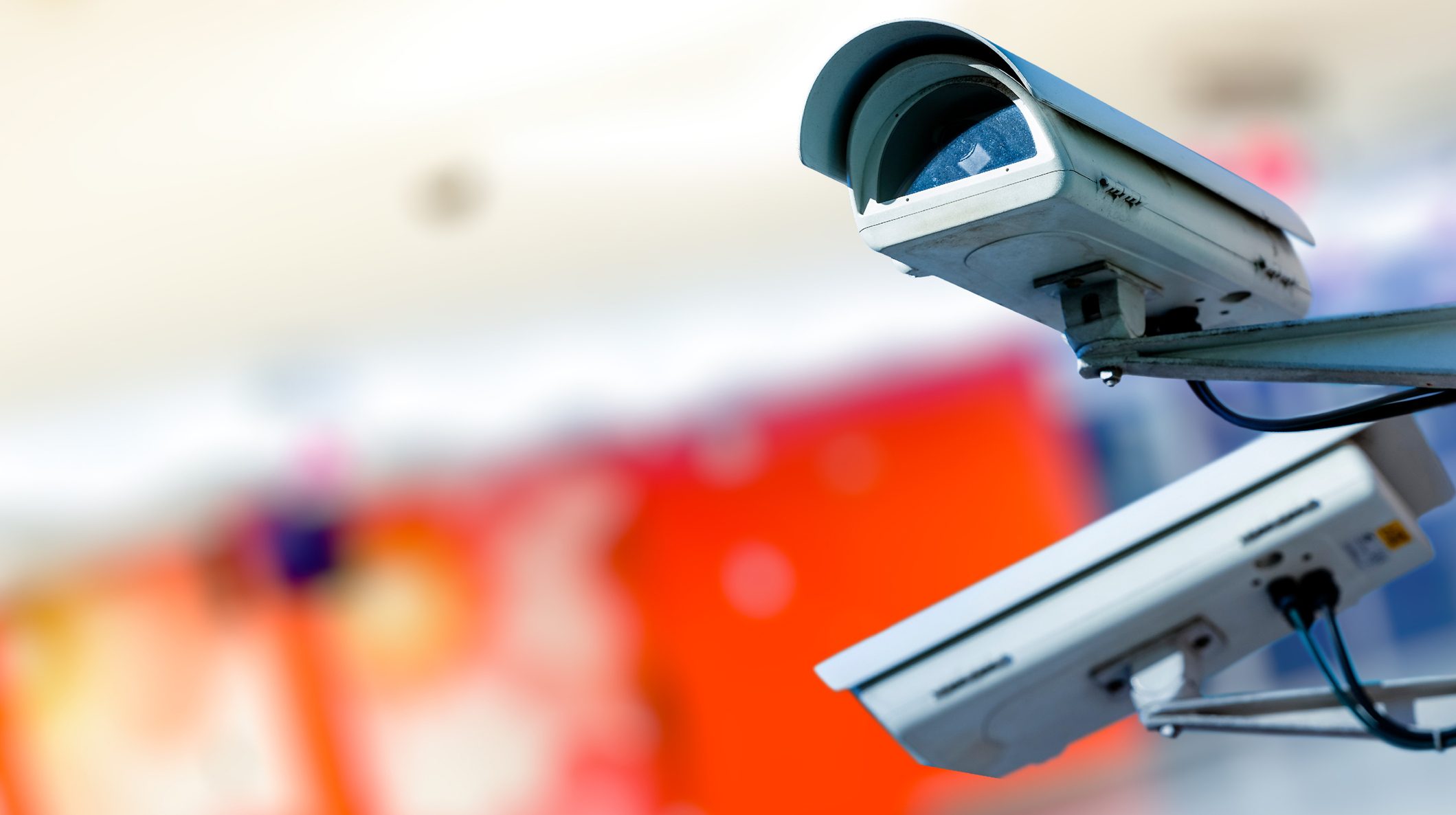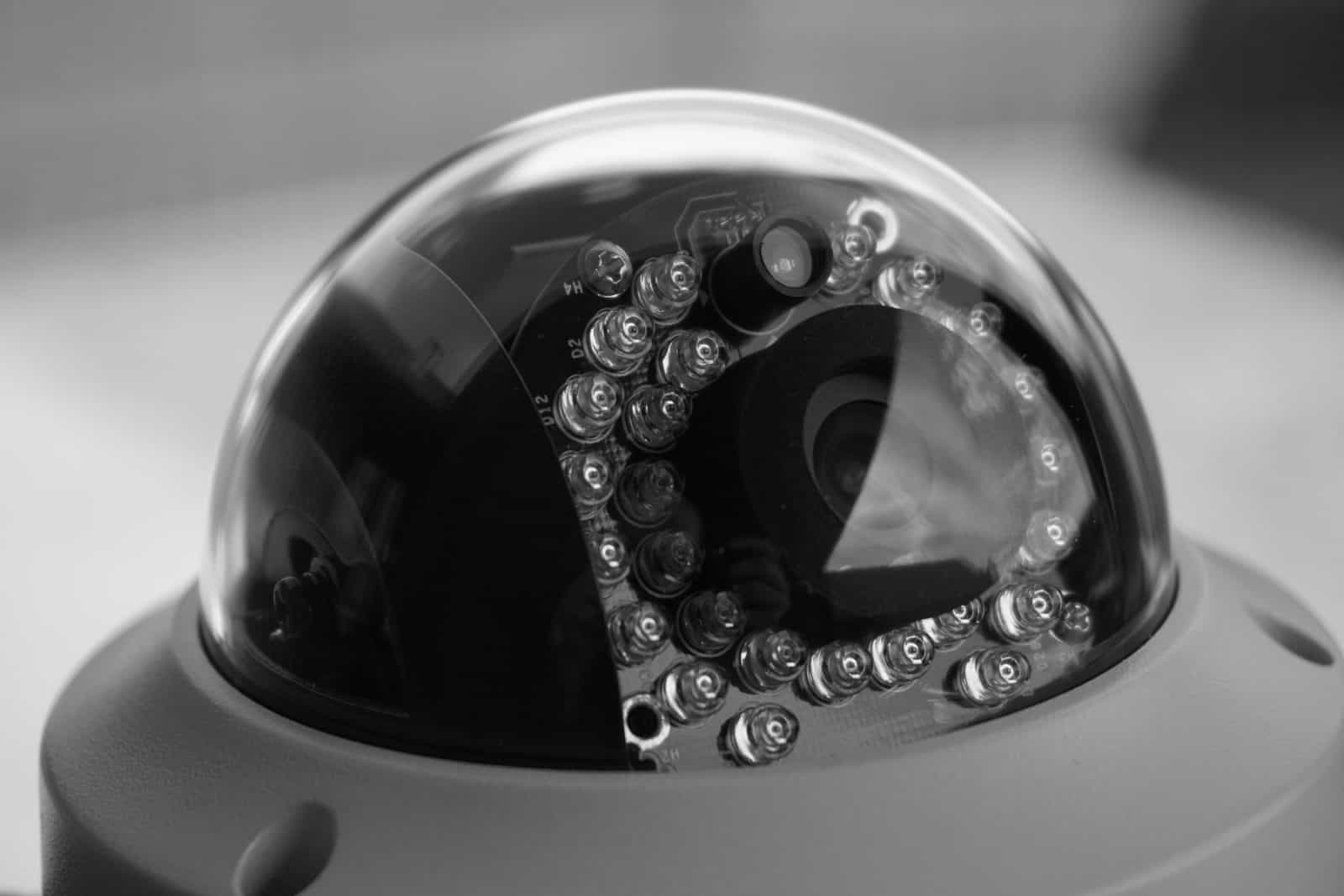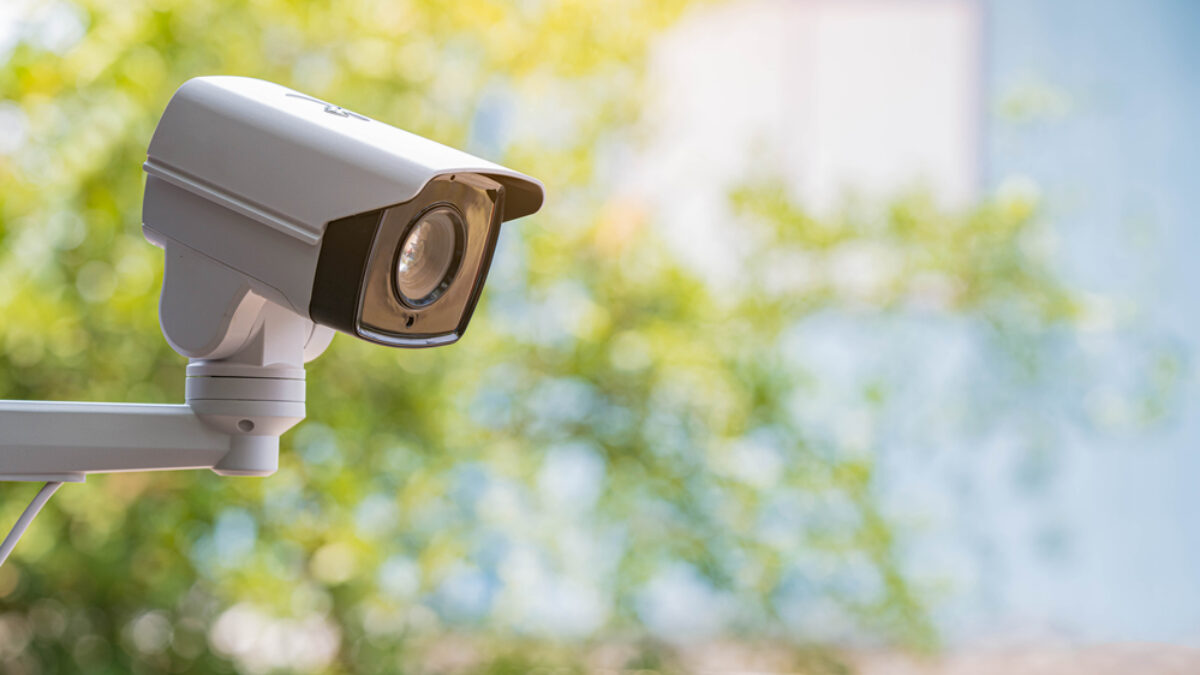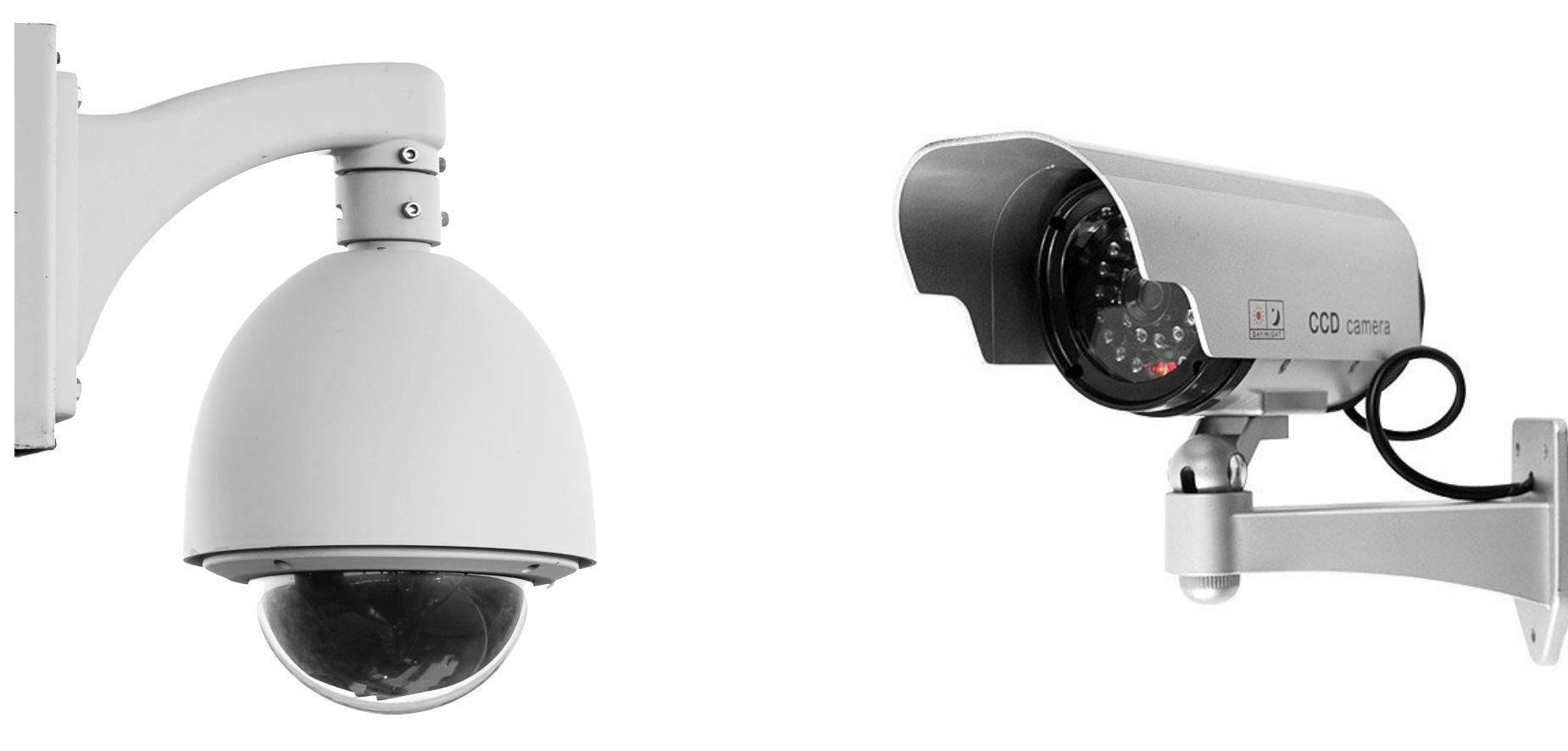Home>Home Security and Surveillance>How To Hack Home Security Cameras
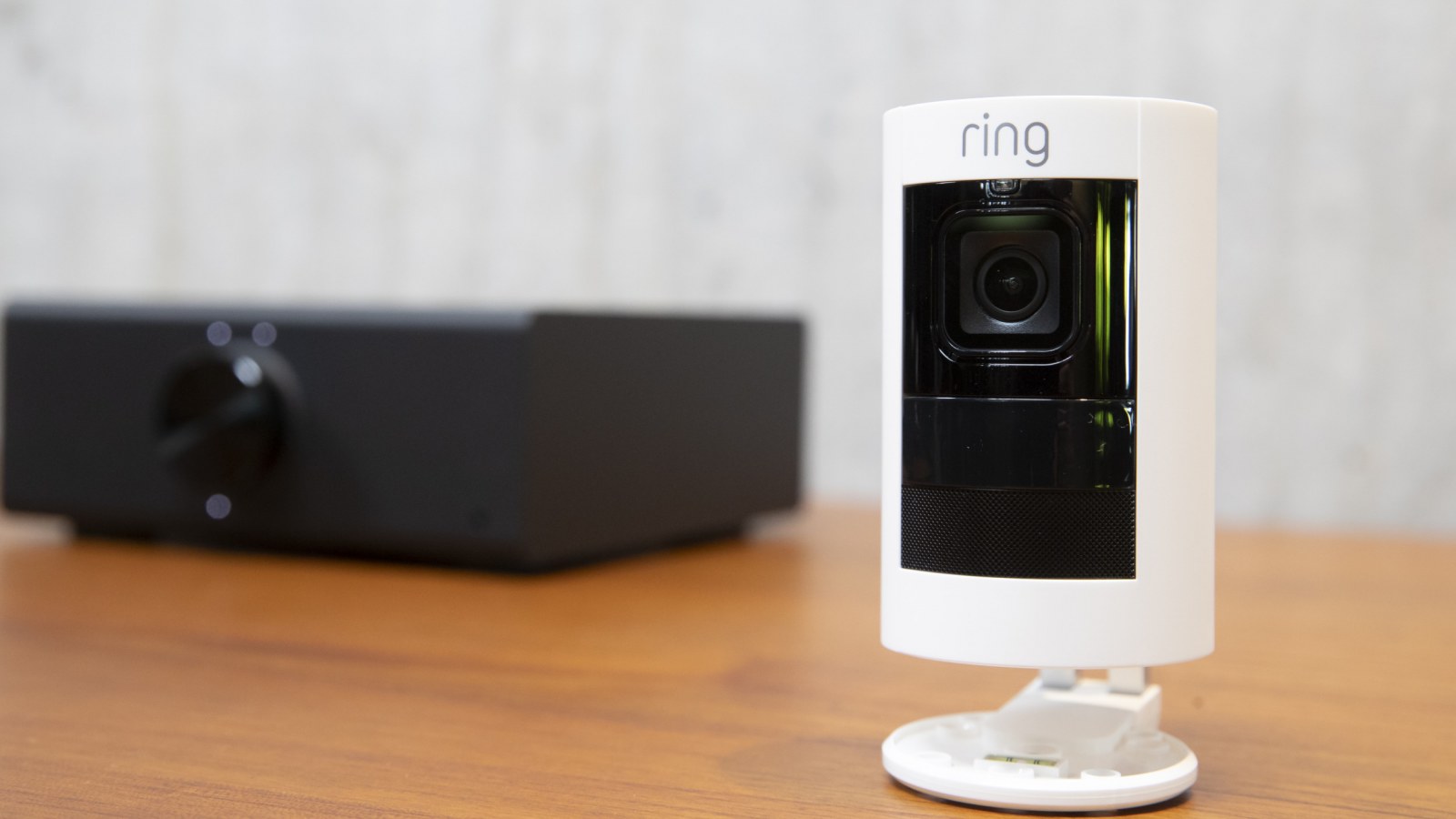

Home Security and Surveillance
How To Hack Home Security Cameras
Modified: March 6, 2024
Learn how to hack and access home security cameras for surveillance purposes. Enhance your understanding of home security and surveillance to protect your home.
(Many of the links in this article redirect to a specific reviewed product. Your purchase of these products through affiliate links helps to generate commission for Storables.com, at no extra cost. Learn more)
Introduction
Welcome to the world of home security and surveillance systems! As technology continues to evolve, so does the need for effective measures to protect our homes and loved ones. Home security cameras have become an essential component of a comprehensive home security strategy.
In this article, we will explore the fascinating realm of home security cameras, providing insights into their workings, vulnerabilities, and steps to secure them. We will also touch upon the intriguing concept of hacking home security cameras (for educational purposes only!) to understand the potential risks and take necessary precautions.
Home security cameras play a vital role in deterring burglars, monitoring your property, and providing peace of mind. They are often equipped with advanced features such as motion detection, night vision, and remote access, allowing you to keep a watchful eye on your home from anywhere in the world.
However, like any other technology, home security cameras are not immune to vulnerabilities. Hackers can exploit weaknesses in the camera’s software, default settings, or even the user’s habits to gain unauthorized access and compromise your privacy.
In this age of interconnected devices, securing your home security cameras is of utmost importance. A compromised camera can not only be used to invade your privacy but can also serve as a gateway for hackers to access your entire home network, potentially compromising other devices and data.
While we do acknowledge the importance of understanding the vulnerabilities in home security cameras, it is crucial to emphasize that hacking into someone else’s cameras without their explicit consent is illegal and unethical. The intention behind exploring these vulnerabilities and security measures should always be to empower homeowners to protect their devices and personal information.
So, let’s dive into the fascinating world of home security cameras, understand their vulnerabilities, and learn how to secure them effectively to ensure the safety and security of our homes.
Key Takeaways:
- Protect Your Home Security Cameras
Change default credentials, update firmware, and secure your network to prevent unauthorized access. Regularly monitor activity and stay informed about security practices to maintain a secure home surveillance system. - Control Your Camera, Secure Your Privacy
Access and customize your camera’s settings while implementing strong authentication. Regularly review and update security practices to ensure privacy and protect your loved ones.
Read more: How To Hack Into Security Cameras
Understanding Home Security Cameras
Before we delve into the vulnerabilities and security measures associated with home security cameras, let’s first gain a clear understanding of how these devices work. Home security cameras, also known as surveillance cameras, are designed to monitor and record activities in and around your home.
There are various types of home security cameras available in the market, ranging from wired to wireless, indoor to outdoor, and high-definition to 4K resolution. Each type has its own features and specifications, but they all serve the common purpose of capturing video footage and providing a visual record of events.
Most home security cameras come equipped with motion detection capabilities. This means that they will start recording whenever they detect any movement within their field of view. Some cameras even have advanced AI algorithms that can differentiate between humans, animals, and objects, minimizing false alerts.
In addition to video recording, many home security cameras are equipped with audio capabilities, allowing you to not only see what is happening but also hear the sounds within the camera’s range. This can be useful for monitoring conversations or detecting unusual noises.
One of the most significant advancements in home security cameras is the ability to access the camera’s live feed remotely. This means that you can view the camera’s footage in real-time from your smartphone, tablet, or computer, no matter where you are in the world. This remote access feature provides convenience and peace of mind, allowing you to keep an eye on your home even when you are away.
To achieve remote access, home security cameras are typically connected to your home’s Wi-Fi network. This connection allows the camera to transmit the video and audio data to a cloud storage or a local recording device. It also enables you to control and configure the camera’s settings through a dedicated mobile app or a web interface.
Understanding the inner workings of home security cameras is essential when it comes to securing them. Now that we have a firm grasp on how these devices operate, we can dive deeper into the vulnerabilities that hackers may exploit and the necessary steps to safeguard our cameras and protect our privacy.
Common Vulnerabilities in Home Security Cameras
Home security cameras, like any other technology, are not immune to vulnerabilities. Hackers are constantly searching for security loopholes to exploit and gain unauthorized access to these devices. Let’s explore some of the most common vulnerabilities found in home security cameras:
- Default credentials: Many home security cameras come with default usernames and passwords, set by the manufacturer. Often, users fail to change these default credentials, making it easy for hackers to gain access. It is crucial to change the default login information as soon as you set up your camera.
- Weak passwords: Along similar lines, weak and easily guessable passwords pose a significant risk to home security cameras. Common passwords like “123456” or “password” make it effortless for hackers to brute-force their way into the camera’s interface. It is essential to use strong, unique passwords that combine letters, numbers, and symbols.
- Firmware vulnerabilities: Firmware is the software running on a home security camera. Just like any other software, it may have vulnerabilities that hackers can exploit. It is crucial to keep the camera’s firmware up to date by regularly checking for updates on the manufacturer’s website or through the camera’s management interface.
- Open ports: Home security cameras often communicate through specific ports on your home network. If these ports are left open without proper security measures, hackers can scan and identify them, potentially gaining unauthorized access to the camera’s feed and settings. It is essential to secure your network and close unnecessary open ports.
- Remote access misconfiguration: While remote access to home security cameras provides convenience, it can also introduce vulnerabilities if not properly configured. Failure to set up secure remote access protocols and secure transmission channels can leave your camera vulnerable to hacking attempts. It is important to enable encryption and use strong, unique login credentials for remote access.
- Third-party app vulnerabilities: Many home security camera systems rely on third-party mobile apps or web interfaces for remote access and control. These apps may have vulnerabilities that hackers can exploit to gain unauthorized access to your camera’s feed and settings. It is essential to use reputable and regularly updated apps from trusted sources.
Understanding these common vulnerabilities is the first step towards securing your home security cameras. In the next sections, we will go over the steps you can take to protect your cameras and mitigate the risks associated with these vulnerabilities. Remember, by being proactive and taking the necessary precautions, you can significantly enhance the security of your home surveillance system.
Gathering Information
Before attempting to secure your home security cameras, it is essential to gather relevant information about your devices. This information will help you understand their current state and identify any potential vulnerabilities. Here are some key steps to gather information about your home security cameras:
- Identify the camera make and model: Start by identifying the make and model of your home security cameras. This information can usually be found on the camera itself or in the product documentation. Knowing the make and model will allow you to research any known vulnerabilities or firmware updates specific to your camera.
- Check the camera’s firmware version: The firmware version of your home security camera plays a crucial role in its security. Check the camera’s settings or the manufacturer’s website to determine the current firmware version. If an update is available, make sure to install it to patch any known vulnerabilities.
- Review the camera’s default settings: Take a close look at the default settings of your home security camera. This includes default usernames, default passwords, and any other settings that may impact the camera’s security. Ensure that you change the default credentials to strong and unique ones to prevent unauthorized access.
- Understand the camera’s network connectivity: Determine how your home security camera connects to your home network. Is it wired or wireless? Does it have an ethernet port or rely on Wi-Fi? Understanding the camera’s network connectivity will help you assess potential security risks and implement appropriate security measures.
- Research known vulnerabilities: Utilize online resources, forums, and security advisories to research any known vulnerabilities associated with your home security camera’s make and model. Stay up to date with the latest security news and alerts related to your camera to ensure you are aware of any potential risks.
- Document device details: Create a document or spreadsheet to record all the relevant information about your home security cameras, including make, model, firmware version, default settings, and any known vulnerabilities. This will serve as a reference point for your security efforts and help you track any updates or changes.
Gathering this information is a crucial first step in securing your home security cameras. It provides a solid foundation for implementing effective security measures and mitigating potential risks. With a clear understanding of your cameras and their vulnerabilities, you can proceed to the next steps of securing your home surveillance system.
Scanning for Open Ports
To enhance the security of your home security cameras, it is important to scan your network for any open ports that could potentially serve as entry points for unauthorized access. Scanning for open ports will help you identify any vulnerabilities and take appropriate action to secure your cameras. Here are the steps to scan for open ports:
- Choose a port scanning tool: There are various port scanning tools available that can help you identify open ports on your network. Popular tools include Nmap, Advanced Port Scanner, and Angry IP Scanner. Choose a tool that aligns with your technical expertise and requirements.
- Select the range of IP addresses to scan: Determine the range of IP addresses that you want to scan for open ports. This includes the IP addresses assigned to your home security cameras as well as other devices on your network. You can usually find this information in your network settings or router configuration.
- Configure the port scanning tool: Set up the port scanning tool to scan the selected range of IP addresses. Define the type of scan you want to conduct, such as a SYN scan, a UDP scan, or a TCP scan. Adjust the scan parameters based on the tool’s documentation and your specific requirements.
- Run the port scan: Initiate the port scanning process and allow the tool to scan the specified IP addresses for open ports. The scanning process may take some time depending on the number of IP addresses and the complexity of the selected scan type.
- Interpret the results: Once the port scan is complete, analyze the results to identify any open ports on your network. Look for ports that are commonly used for surveillance cameras, such as Port 80 (HTTP), Port 554 (RTSP), or Port 8000 (HTTP/TCP). Note down any open ports that could potentially pose a security risk.
- Close unnecessary open ports: If you discover any open ports that are not required for the operation of your home security cameras or other devices, take steps to close them. This can usually be done through your router’s configuration settings. Closing unnecessary open ports will reduce the potential attack surface and enhance your network’s security.
Scanning for open ports is an important step in securing your home security cameras. By identifying and closing unnecessary open ports, you can minimize the risk of unauthorized access. Remember to regularly conduct port scans to ensure the ongoing security of your network and devices.
Read more: How To Hack Into A Wired Security Camera
Finding Default Credentials
Default credentials are pre-configured usernames and passwords that are set by manufacturers for their home security cameras. These default credentials are often well-known and can be easily exploited by hackers to gain unauthorized access. Finding and changing these default credentials is a crucial step in securing your home security cameras. Here’s how you can go about finding default credentials:
- Consult the manufacturer’s documentation: The first place to look for default credentials is in the documentation provided by the manufacturer. Check the user manual, installation guide, or any other documents that came with your home security camera. Look for a section that mentions default login credentials.
- Search the manufacturer’s website: If you no longer have access to the physical documentation, visit the manufacturer’s website. Look for a support or downloads section where you can find product-specific information. Often, manufacturers provide default credentials for their devices on their website.
- Explore online databases and forums: In some cases, default credentials for various home security cameras can be found in online databases or forums. Security researchers or users may have discovered and shared this information to raise awareness. However, exercise caution when accessing and using this information, as it may not always be accurate or up to date.
- Contact customer support: If you are unable to find the default credentials through the above methods, consider reaching out to the manufacturer’s customer support. They should be able to provide you with the correct default login information specific to your home security camera model.
- Use default credentials lookup tools: There are online tools available that can help you find default credentials for various devices, including home security cameras. These tools compile information from various sources and allow you to search for specific make and model combinations. Use these tools as a last resort and exercise caution when using them.
Once you have obtained the default credentials, it is crucial to change them immediately. Access your home security camera’s settings through the dedicated mobile app or web interface and locate the option to change the login credentials. Choose strong and unique usernames and passwords that are not easily guessable or tied to personal information.
Changing default credentials is a fundamental step in securing your home security cameras. By doing so, you significantly reduce the risk of unauthorized access and protect your privacy and the integrity of your security system.
Exploiting Weak Passwords
Weak passwords are one of the most common vulnerabilities that can be exploited by hackers to gain unauthorized access to home security cameras. Many users unknowingly choose weak passwords or reuse the same passwords across multiple devices, making it easier for hackers to crack them. Understanding the risks associated with weak passwords and taking steps to strengthen them is crucial for securing your home security cameras. Here’s what you need to know:
Why are weak passwords a risk?
Weak passwords can easily be guessed or cracked through various methods, such as brute-force attacks, dictionary attacks, or using common password combinations. When it comes to home security cameras, hacked passwords can grant intruders access to the camera’s live feed, settings, and even your entire home network. This can lead to privacy breaches, unauthorized surveillance, and potential harm to your home and loved ones.
What makes a password weak?
Weak passwords are typically short, simple, and lack complexity. Some characteristics of weak passwords include:
- Short length (less than eight characters)
- Common phrases or dictionary words
- Sequences of characters (e.g., “123456” or “abcdefg”)
- Data easily associated with the user (e.g., names, birthdates, or addresses)
- Reuse of passwords across multiple accounts or devices
How to strengthen your passwords:
Enhancing the strength of your passwords significantly increases the security of your home security cameras. Here are some tips to strengthen your passwords:
- Length and complexity: Use a minimum of eight characters and include a mix of uppercase and lowercase letters, numbers, and special characters.
- Avoid common phrases and dictionary words: Instead, opt for a combination of unrelated words or use a password manager to generate strong, random passwords.
- Unique passwords: Avoid reusing passwords across different devices and accounts. Each password should be unique to ensure that a compromise in one account does not affect others.
- Regularly update passwords: Set a reminder to update your passwords periodically, such as every three to six months, to maintain a strong security posture.
- Enable two-factor authentication (2FA): Whenever possible, enable 2FA, which adds an extra layer of security by requiring a second form of verification, such as a code sent to your mobile device.
Implementing strong passwords:
To change your passwords, access the settings of your home security cameras through the dedicated mobile app or web interface. Look for the option to change the login credentials and follow the instructions provided. Remember to choose a password that meets the criteria mentioned above and avoid using personal information or easily guessable combinations.
By strengthening your passwords, you significantly reduce the risk of unauthorized access to your home security cameras. Taking the time to implement strong and unique passwords is an essential step in ensuring the security and privacy of your home.
Always change the default password on your home security cameras to a strong, unique password. This will help prevent unauthorized access and hacking.
Brute-Forcing Passwords
Brute-forcing passwords is a commonly used technique by hackers to gain unauthorized access to home security cameras. This method involves systematically trying every possible combination of characters until the correct password is discovered. Understanding the risks associated with brute-forcing attacks and implementing measures to protect against them is crucial for securing your home security cameras. Here’s what you need to know:
How does brute-forcing work?
Brute-forcing involves using automated tools or scripts to systematically try a vast number of password combinations until the correct one is found. These tools typically start with simple and common passwords, then move on to more complex variations such as dictionary words, common character substitutions, or sequential combinations. Brute-forcing attacks can be time-consuming but can eventually crack weak passwords.
Why are strong passwords essential?
Strong passwords significantly reduce the risk of brute-forcing attacks. A strong password is long, complex, and unique, making it difficult for attackers to guess or crack. By using a mix of uppercase and lowercase letters, numbers, and special characters, you increase the number of possible combinations, making it more challenging for attackers to guess correctly within a reasonable time frame.
Protecting against brute-forcing attacks:
Here are some measures you can take to protect your home security cameras against brute-forcing attacks:
- Use strong and unique passwords: As mentioned earlier, strong and unique passwords significantly reduce the risk of brute-forcing attacks. Avoid common phrases, dictionary words, or easily guessable combinations. Utilize a combination of unrelated words or consider using a password manager to generate and store complex passwords.
- Implement account lockouts: Most home security camera systems allow you to set up account lockouts after a certain number of failed login attempts. This means that if an attacker attempts to brute-force the password, the account will be temporarily locked after a specified number of incorrect tries. This can help mitigate the impact of brute-forcing attacks.
- Enable CAPTCHA or reCAPTCHA: CAPTCHA (Completely Automated Public Turing test to tell Computers and Humans Apart) or reCAPTCHA is a security measure that displays a challenge-response test to verify if the user is human. Implementing CAPTCHA or reCAPTCHA can help prevent automated brute-forcing attacks by distinguishing between human and automated login attempts.
- Monitor failed login attempts: Regularly review the logs or security reports provided by your home security camera system to identify any unusual or repeated failed login attempts. This can help detect potential brute-forcing attacks and allow you to take appropriate action.
Ensuring the security of your home security cameras requires proactive measures to protect against brute-forcing attacks. By implementing strong and unique passwords, enabling account lockouts, and monitoring failed login attempts, you significantly reduce the risk of unauthorized access to your cameras.
Exploiting Firmware Vulnerabilities
Firmware vulnerabilities are software weaknesses that exist within the operating system or embedded software of home security cameras. Hackers can exploit these vulnerabilities to gain unauthorized access, manipulate camera settings, and potentially compromise the security of your home network. Understanding the risks associated with firmware vulnerabilities and taking preventive measures is crucial for securing your home security cameras. Here’s what you need to know:
Why are firmware vulnerabilities a risk?
Firmware vulnerabilities provide a pathway for hackers to exploit security weaknesses in your home security cameras. By targeting these vulnerabilities, attackers can execute malicious code, gain root access, or bypass security measures. This can result in unauthorized access to the camera’s feed, tampering with settings, or even using the camera as a gateway to infiltrate your home network.
How to protect against firmware vulnerabilities:
While firmware vulnerabilities may be discovered by security researchers or manufacturers and subsequently patched, it is important to take preventive measures to protect against potential exploitation. Here are some steps you can take:
- Keep firmware updated: Regularly check for firmware updates provided by the manufacturer. These updates often include security patches that fix known vulnerabilities. Follow the manufacturer’s instructions to update the firmware of your home security cameras to ensure that you have the latest protections in place.
- Enable automatic firmware updates: If available, enable automatic firmware updates for your home security cameras. This ensures that you receive the latest security patches without manual intervention, reducing the risk of forgetting or delaying updates.
- Monitor manufacturer’s security advisories: Stay informed about any security advisories or alerts issued by the manufacturer regarding firmware vulnerabilities. Manufacturers often publish information on potential vulnerabilities and provide guidance on mitigating the risks. Regularly check their website or subscribe to their mailing list for timely updates.
- Disable unnecessary features: Review the features and functionalities offered by your home security cameras. Disable any unnecessary features, especially those that require network connectivity or have a potential security impact. By minimizing the attack surface, you reduce the potential risk of exploitation.
- Use reputable manufacturers: When purchasing home security cameras, opt for reputable manufacturers with a track record of providing security updates and addressing firmware vulnerabilities promptly. Research the manufacturer’s stance on security and their commitment to releasing timely patches.
By regularly updating the firmware of your home security cameras, monitoring security advisories, and minimizing unnecessary features, you can significantly reduce the risk of exploits through firmware vulnerabilities. Stay vigilant and proactive to ensure the ongoing security of your devices and protect your home network.
Accessing the Camera’s Interface
Accessing the interface of your home security camera is essential for configuring settings, managing recordings, and monitoring its live feed. By accessing the camera’s interface, you can customize various features to suit your specific needs and ensure optimal functionality. Here’s what you need to know about accessing the camera’s interface:
1. Determine the IP address:
To access the camera’s interface, you first need to determine its IP address. The IP address is a unique identifier assigned to the camera on your home network. It can usually be found in the camera’s documentation or obtained through your router’s management interface by looking at the list of connected devices.
2. Use a web browser or dedicated app:
There are two primary methods for accessing the camera’s interface: through a web browser or a dedicated mobile app. Both options have their advantages, so choose the method that aligns with your preferences and the capabilities of your camera.
Accessing through a web browser:
If your camera has a web-based interface, follow these steps:
- Launch a web browser on a computer or device connected to the same network as your camera.
- Enter the IP address of your camera in the address bar of the web browser.
- You will be prompted for login credentials. Enter the appropriate username and password for your camera.
- Once logged in, you will have access to the camera’s interface, where you can configure settings, view live video, and manage recordings.
Accessing through a dedicated mobile app:
Some cameras offer dedicated mobile apps that provide convenient access to the camera’s interface. Here’s how to access it:
- Download and install the mobile app provided by the camera manufacturer from the appropriate app store.
- Open the app and follow the on-screen instructions to set up your camera and pair it with the app.
- Once paired, you can access the camera’s interface through the app on your mobile device. The app will typically provide options to configure settings, view live feed, and manage recordings.
3. Customize camera settings:
Once you have successfully accessed the camera’s interface, take the time to configure settings according to your preferences and security requirements. This may include adjusting video quality, enabling motion detection, setting up recording schedules, and configuring network settings for remote access.
4. Secure the camera’s interface:
Securing the camera’s interface is crucial to prevent unauthorized access to your camera and the potential compromise of your privacy. Take the following steps to enhance security:
- Change default login credentials: Immediately change the default username and password provided by the camera manufacturer to unique, strong credentials.
- Enable encryption: If available, enable encryption protocols such as HTTPS (HTTP Secure) to ensure that all communication between your web browser or app and the camera’s interface is encrypted.
- Consider two-factor authentication (2FA): Some cameras may offer the option to enable 2FA, providing an extra layer of security by requiring a second form of verification.
- Regularly update firmware: Stay up to date with firmware updates provided by the camera manufacturer to address any security vulnerabilities and enhance the overall security of your camera.
By accessing the camera’s interface and customizing the settings while implementing appropriate security measures, you can optimize the functionality of your home security camera while keeping it safe from unauthorized access.
Controlling the Camera
Controlling your home security camera is an essential aspect of maximizing its functionality and ensuring effective monitoring of your property. By understanding how to control the camera, you can adjust its position, monitor specific areas, and use advanced features to enhance your home security. Here’s what you need to know about controlling your home security camera:
1. Adjusting the camera’s position:
Most home security cameras come with pan, tilt, and zoom (PTZ) capabilities, allowing you to adjust the camera’s position remotely. This control enables you to monitor different areas or track moving objects within the camera’s field of view. Depending on your camera’s features, you can control the camera’s movement through a web interface or a dedicated mobile app.
2. Monitoring specific areas:
Controlling the camera allows you to focus on specific areas of interest within your property. This is particularly useful for monitoring entry points, driveways, or high-value areas. By positioning and angling the camera appropriately, you can ensure comprehensive coverage of critical areas and minimize blind spots.
3. Utilizing motion detection and alerts:
Many home security cameras offer motion detection capabilities, allowing the camera to automatically detect and record any movement within its field of view. By controlling the camera’s motion detection settings, you can customize the sensitivity, detection zones, and notification settings to ensure accurate detection and timely alerts of any suspicious activity.
4. Enabling remote access:
Controlling your home security camera remotely provides flexibility and convenience. Through a dedicated mobile app or a web interface, you can access the camera’s live feed, control its movement, and configure settings from anywhere in the world. Remote access enables you to monitor your property, receive alerts, and respond to events in real-time, enhancing the overall security of your home.
5. Using advanced features:
Depending on your camera’s model and capabilities, you may have access to advanced features that enhance the functionality and security of your home security camera system. These features can include two-way audio communication, night vision for low-light conditions, intelligent object tracking, facial recognition, and more. Familiarize yourself with these features and utilize them based on your specific needs.
6. Ensuring privacy:
While remote access and control of home security cameras provide convenience, it is essential to ensure the privacy and security of your camera feed. Implement strong and unique passwords, enable encryption protocols, keep firmware updated, and regularly review and adjust your camera’s privacy settings to prevent unauthorized access.
By understanding and effectively controlling your home security camera, you can maximize its functionality, optimize monitoring capabilities, and enhance the overall security of your property.
Steps to Secure Home Security Cameras
Securing your home security cameras is crucial to safeguard your privacy, protect your property, and prevent unauthorized access. By following these steps, you can strengthen the security of your cameras and mitigate potential risks:
1. Change default credentials:
Immediately change the default usernames and passwords provided by the manufacturer. Choose strong, unique passwords that combine letters, numbers, and special characters. Avoid using easily guessable information, such as personal details or common dictionary words. Regularly update your passwords to maintain strong security.
2. Update firmware:
Regularly check for firmware updates from the manufacturer and apply them promptly. Firmware updates often include security patches that address vulnerabilities and improve overall camera performance. Stay vigilant and ensure that your cameras remain up to date with the latest firmware versions.
3. Secure your network:
Strengthen your home network security to prevent unauthorized access to your cameras. Change the default username and password on your Wi-Fi router and enable encryption protocols (such as WPA2) to protect your network traffic. Disable any unnecessary network services and close open ports to limit potential entry points for hackers.
4. Enable strong authentication:
Add an extra layer of security by implementing two-factor authentication (2FA) whenever possible. 2FA requires a secondary form of verification, such as a unique code sent to your mobile device, in addition to the password. This provides an additional barrier against unauthorized access to your cameras and accounts.
5. Set up a separate network:
If feasible, consider setting up a separate network specifically for your home security cameras. This isolated network can provide an extra layer of protection by segregating your cameras from other devices on your home network, reducing the potential risk of compromise.
6. Review privacy settings:
Familiarize yourself with the privacy settings of your cameras and adjust them according to your preferences. Disable any unnecessary features or access permissions that may compromise your privacy. Regularly review and update your privacy settings to ensure they align with your security requirements.
7. Regularly monitor and review activity:
Monitor and review the activity logs and reports provided by your home security camera system. Stay alert for any unusual or unauthorized access attempts, failed login attempts, or changes in camera settings. Regularly review the footage from your cameras to detect any suspicious activity that may require further investigation.
8. Secure physical access:
Ensure that your cameras are physically secure and located in areas where they are less susceptible to tampering or theft. Protect the power and network cables by concealing them or making them difficult to access. Consider using tamper-resistant mounting brackets or enclosures to further protect your cameras.
9. Regularly backup recordings:
Regularly backup the recorded footage from your home security cameras. This ensures that even if the camera or the storage device is compromised, you have a copy of the important recordings. Store backups in a secure location or use cloud-based storage options for added protection.
10. Stay informed:
Stay updated with the latest security news and advisories related to your home security camera system. Subscribe to manufacturer newsletters, follow security blogs, and participate in relevant online communities to remain informed about potential vulnerabilities, patches, and best practices.
By following these steps, you can significantly enhance the security of your home security cameras and protect your privacy. Remember, vigilance and proactive measures are key to maintaining a secure and reliable home surveillance system.
Conclusion
Home security cameras play a vital role in protecting our homes and loved ones. However, like any other technology, they are not immune to vulnerabilities that can be exploited by hackers. Securing your home security cameras is crucial to maintain your privacy, protect your property, and ensure the overall security of your home network.
In this article, we have explored various aspects of home security cameras, including understanding their functionalities, common vulnerabilities, and steps to secure them effectively. We have delved into topics such as default credentials, weak passwords, firmware vulnerabilities, and the importance of accessing and controlling the cameras’ interfaces.
By following essential security measures such as changing default credentials, updating firmware, securing your network, and enabling strong authentication, you can significantly reduce the risk of unauthorized access to your cameras. Regularly monitoring and reviewing activity, securing physical access, and staying informed about the latest security practices are also critical in maintaining a secure home surveillance system.
Remember, the focus should always be on protecting your privacy and ensuring the safety of your loved ones. Hacking into someone else’s cameras without consent is both illegal and unethical. The intention of exploring vulnerabilities and implementing security measures should always be to empower homeowners to protect their devices and personal information.
By implementing the steps outlined in this article, you can create a robust and secure environment for your home security cameras. Regularly reviewing and updating your security practices is essential, as new vulnerabilities may emerge over time. Stay vigilant, stay informed, and take the necessary precautions to keep your home surveillance system safe and secure.
With the right security measures in place, you can enjoy the peace of mind that comes from knowing that your home security cameras are protecting your property while preserving your privacy.
Frequently Asked Questions about How To Hack Home Security Cameras
Was this page helpful?
At Storables.com, we guarantee accurate and reliable information. Our content, validated by Expert Board Contributors, is crafted following stringent Editorial Policies. We're committed to providing you with well-researched, expert-backed insights for all your informational needs.
